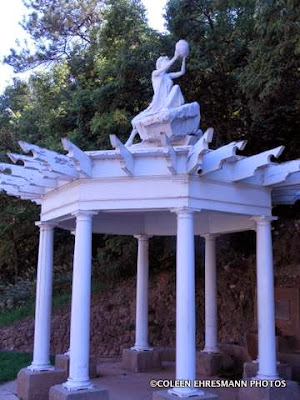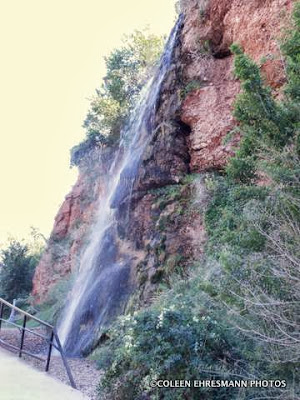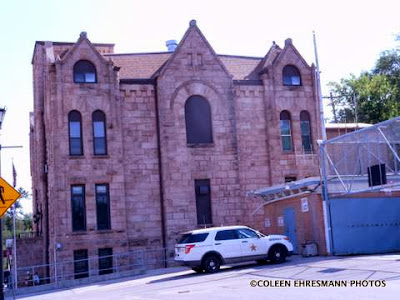White settlers named the town Minnekahta in 1879, but later changed the name to Hot Springs because of the natural warm waters flowing from the many springs. Entrepreneur Fred Evans "built Evans Plunge over a group of small springs and one giant thermal spout of warm mineral water." The plan was to turn the whole town into a health spa. Water temperature is 87º in Evans Plunge.

Evans Plunge built in 1890
A more recent photo of Evans Plunge
When the railroad began unloading passengers at the Hot Springs Train depot in 1891, the town's future was secure.


Train depot today

Train depot in 1908

Geocaching took us to another springs location along the Fall River

The 1920 Gazebo


Flowing water

Why Kidney Springs was given its name

No, I did not drink the water

Waterfall farther along the walking path

Hot Springs has over 35 sandstone buildings, some of them along
the main street and several of them on the National Historic Landmark.


Evans Hotel built in 1893
Today it is the Red Rock River Resort Hotel & Spa.
It is located across from the train depot.

Fall County Jail

In 1974 a sinkhole of mammoth bones was discovered
when earth moving equipment exposed South Dakota's
greatest fossil treasure.
Today it is the world's largest Columbian mammoth exhibit
and a world-renown research center.

As of now, the Mammoth Site has found 61 Mammoths
(58 Columbian Mammoths and 3 wooly mammoths)
along with 85 other species of animals, plants, and
several unidentified insects.




Hot Springs is the "Gateway to the Southern Black Hills". Other nearby attractions include Wind Cave, Custer State Park, Black Hills Wild Horse Sanctuary, fishing and golfing.


Some day we are going to have to take the time to 'be a tourist' as we drive west. You can check out all the interesting places and then we'll visit! Sounds like a plan to me. I enjoyed looking at the old photos, lots of activity around the train station way back when. One nice thing about the States is that you preserve your buildings.
ReplyDelete